Acids and Bases, the "Spy vs. Spy" of the Lubrication Game
In many ways, the properties of acids and bases are embodied by the classic cartoon strip, “Spy vs...
Acid Number [AN] is an important test, particularly for industrial lubricants. It is important, however, to relate the acid number to other test results whenever possible in order to assess its significance with an acceptable degree of confidence. Acid number as determined consists of the measurement of all acidic compounds. New oils exhibit a baseline acid number that is representative of the additive package in use (as most oil additives are slightly acidic when new). As oils age they begin to degrade. The primary degradation process is oil oxidation. Anti-oxidants are present in all lubricating oils to prevent rapid oxidation of the oil during use. As the anti-oxidant is used up oxidation first cleaves hydrocarbon molecules and creates free radicals and peroxides that accelerate lubricant degradation. Eventually the hydrocarbon molecules begin to form long-chain polymers (oxi-polymerization) in a process known as condensation. Both the free radical and oxi-polymerized products of oil degradation are acidic and can be measured indirectly by the acid number test. In used oil analysis, acid number baselines are established for new unuesd oils and the used oil is given an acid number limit based on some increase from the new acid number value. For large oil reservoirs (1,000 gallons or larger) other test methods (i.e. RPVOT, Linear Sweep Voltammetry - RULER) should be employed to monitor oil degradation as the acid number result does not increase as rapidly.
To perform an Acid Number analysis a weighed amount of oil is mixed with a titration solution that contains an indicator (for manual titrations), then titrated with alcoholic potassium hydroxide (KOH) to determine acid number. The acid number is determined when the solution reaches a set pH value (or a color change takes place for a manual titration). A simple manual titration set-up that any chemistry student is familiar with is shown below. Commerical oil analysis laboratories use accurate dosimat systems to perform manual titrations or use automatic titration systems utilizing either potentiometric, thermometric or coulorimetric titration probes for high volume processing of acid number testing.
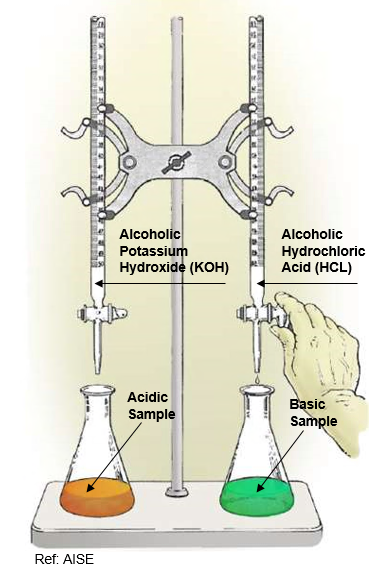
Figure - A simple titration set-up that would be familiar in any high school or university chemistry lab. On the left titrating with KOH gives the Acid Number (AN) of the oil. On the right titrating with HCL provides the Base Number (BN) of the oil.
This case study is from a rotary compressor and illustrates the dramatic effect that additive depletion (be it anti-oxidant or in this case anti-corrosion additive) has on the oxidation level of the oil. Acid Number (AN) correlates very well with increasing oxidation levels within an oil. Historically the AN level has been under 1.0 mg/KOH. We notice, however, that after 2-7-02 the AN level takes a dramatic upswing. The reason for this dramatic increase is that the anti-corrosion additive (which also controls oxidation for this type of oil) has been depleted and now oxidation can occur unimpeded.
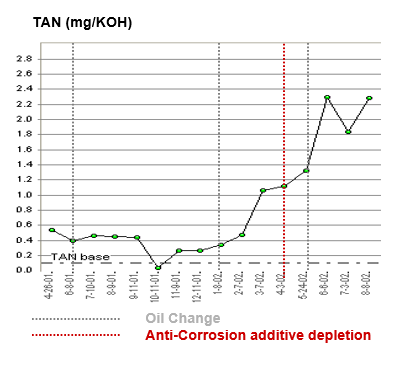
Figure - The red line, in the acid number graph above, indicates the point at which the anti-corrosion additive in the PAG fluid was depleted. It`s evident that oil oxidation occurred unabated once this additive was sufficiently depleted.
In this example you can see the dramatic effect that oxidation is having on both the acid number level (as well the viscosity also increases quite rapidly once the anti-corrosion additive has been depleted). The client should have taken action to change the oil back on 3-7-02, but did not. The fact that a Polyalkylene Glycol (PAG) fluid was in use in this compressor was helpful, as PAG fluids resist forming varnishes and sludge much better than mineral oils, and most other types of synthetic fluids. Had this been a conventional mineral oil the compressor may very well have failed.
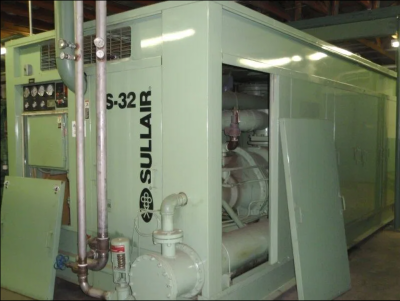
Figure - Fortunately this rotary compressor was using a PAG-based compressor oil which mitigated the effects of severe oil oxidation.
We have already mentioned the effect that water ingression can have on an oil`s degradation rate. This case study illustrates this situation dramatically. In this medium sized gearbox in a fiberboard plant, the ingression of a large amount of water is a likely situation. In fact the sample history shows to occurences of significant water ingression (> 2.0% water) over a period of 3 years. Each time the water ingression is present, the Acid Number (AN) jumps dramatically over the subsequent sample interval (as can be seen between 11-23-1998 and 03-02-1999, and also again between 04-10-2002 and 06-06-2002).
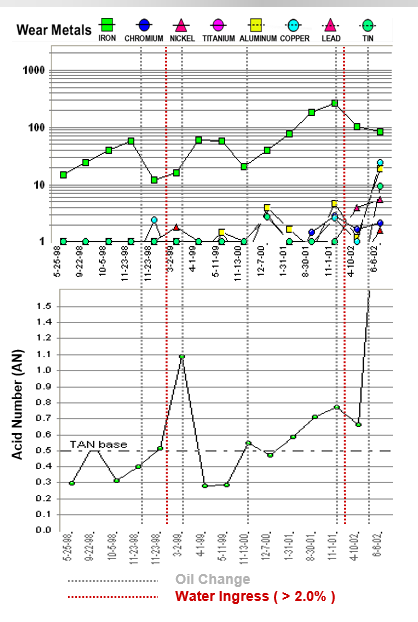
Figure - The red lines in the wear metal and acid number graphs above indicate where a gross water contamination was detected. The water caused a sudden increase in the acide number which led to an increase in corrosion in the gearbox.
The effect of water ingression on the oil is further exacerbated by the presence of Extreme Pressure (EP) additives in the oil. The combination of water with these corrosive EP additives causes a rapid increase in acidity level in the oil and the subsequent attack of the oil on bronze and babbitt components. This is evidenced by the increase in copper, aluminum and lead levels after the second serious water ingression after 04-10-2002.
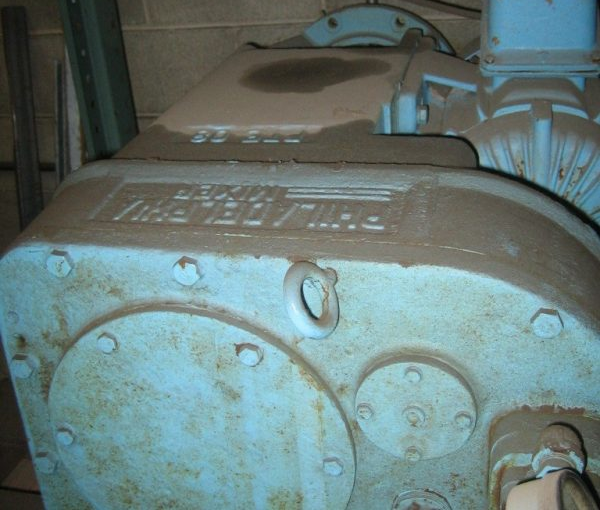
Figure - The mixture of water and the extreme pressure additives in the gearbox oil led to rapid corrosion of the components.